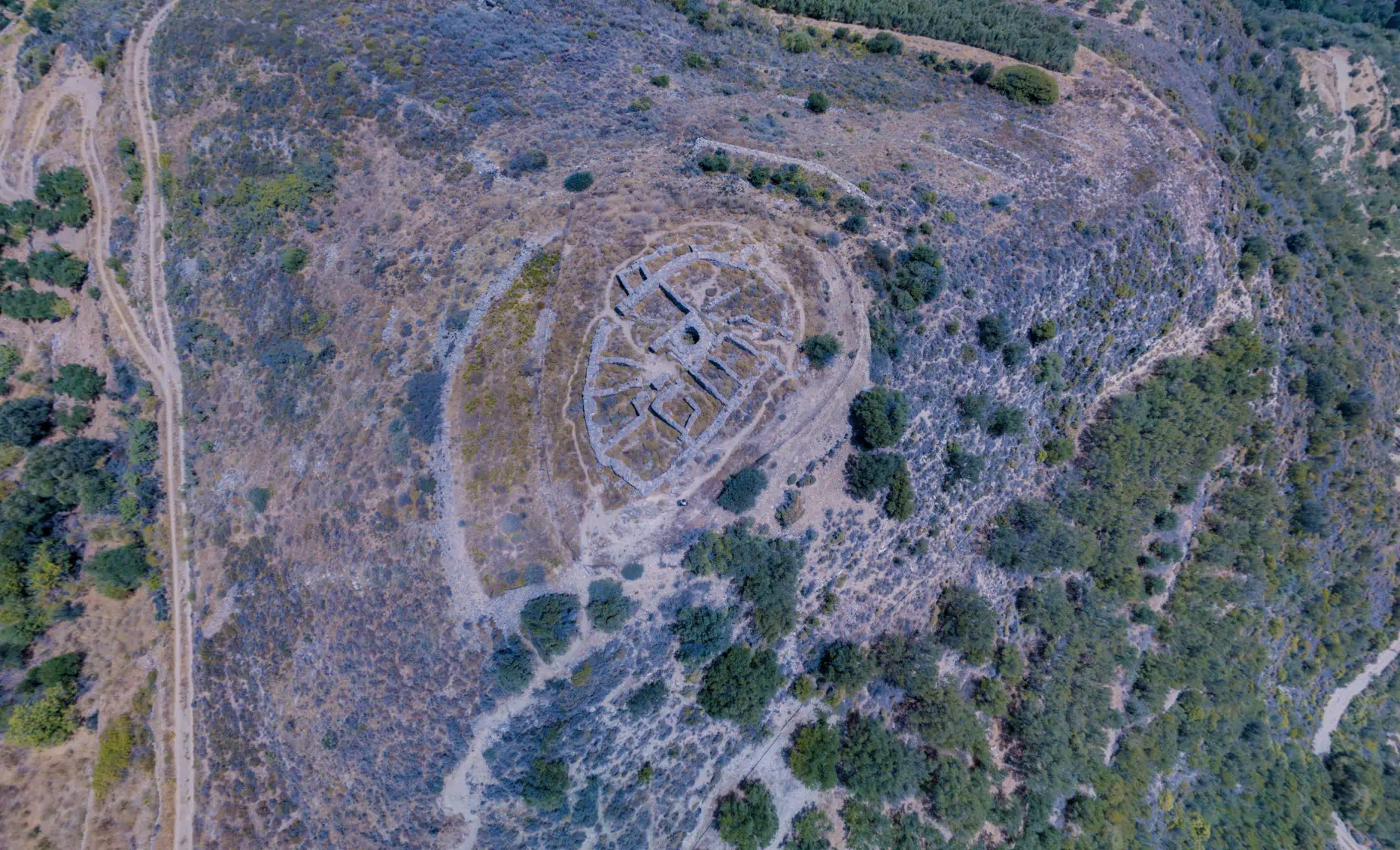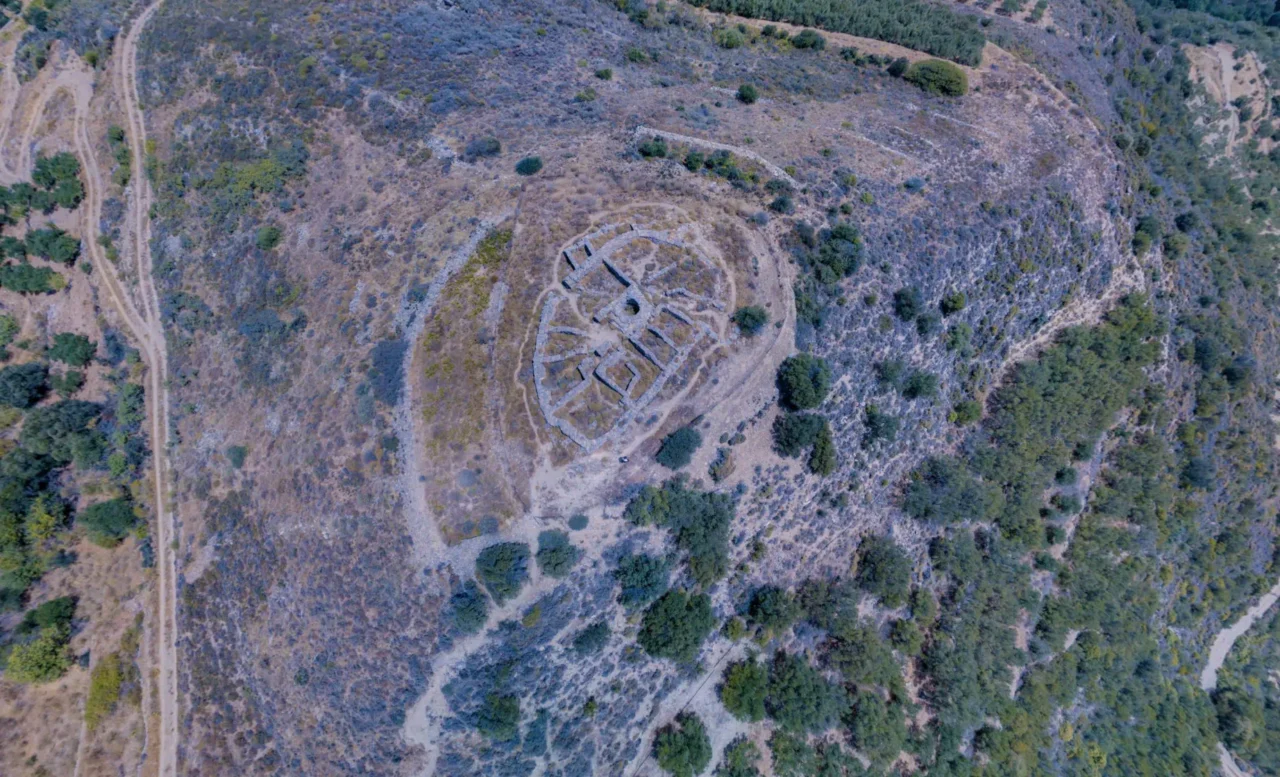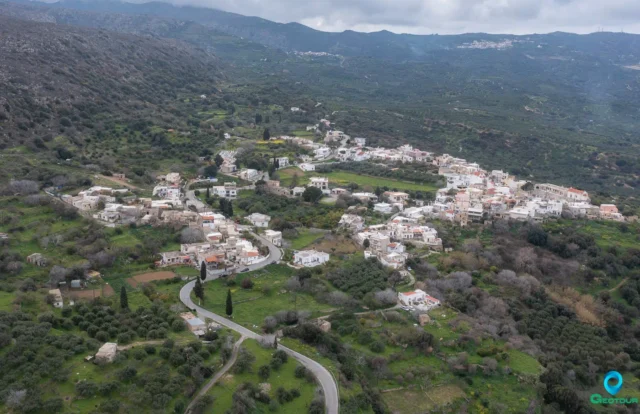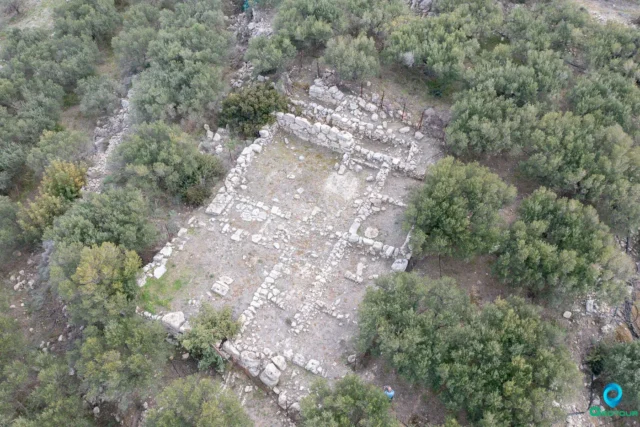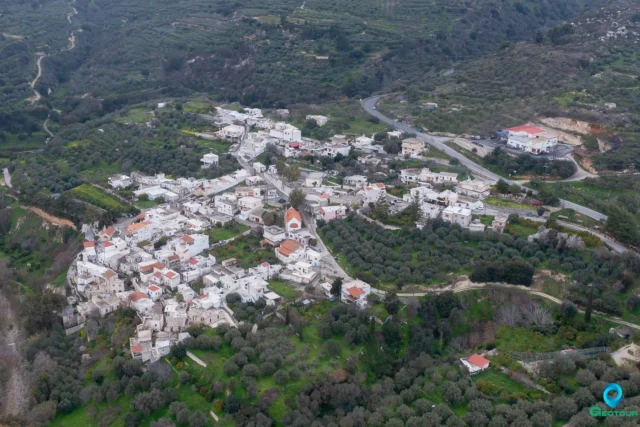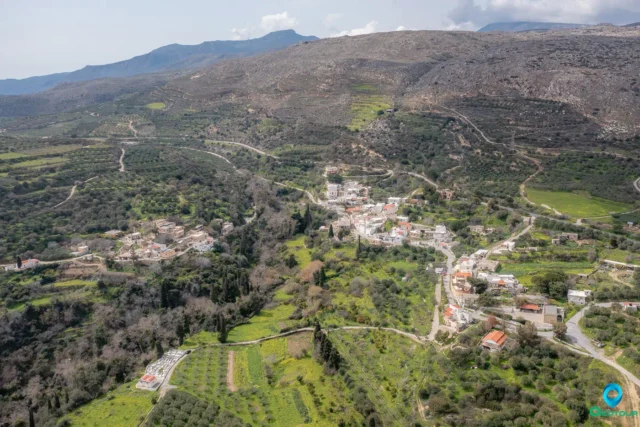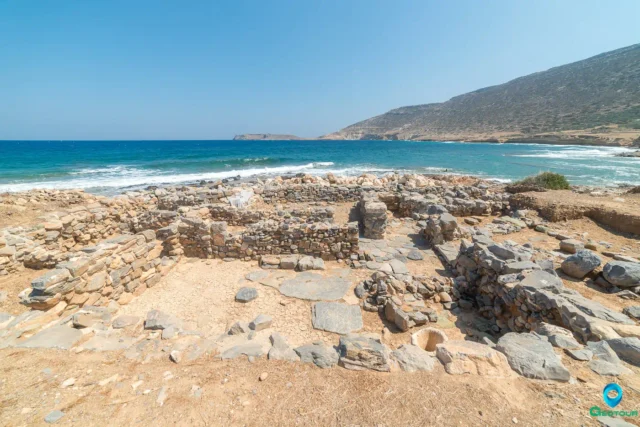Chamezi Archaeological Site: Unveiling Minoan Life in Eastern Crete
The Chamezi archaeological site, situated near the modern village of Chamezi in eastern Crete, offers a unique glimpse into Minoan life during the Middle Minoan IA period (c. 2000-1900 BCE). The site’s most notable feature is an elliptical house, a unique architectural form within the Minoan world.
The Elliptical House: A Minoan Enigma
Discovered in 1903 by Stephanos Xanthoudides, the elliptical house’s unusual shape and function initially puzzled archaeologists. Early interpretations suggested it might have been a peak sanctuary due to the discovery of figurines and other ritual objects. However, subsequent research by Costis Davaras in 1971 revealed the structure was likely a domestic dwelling.
The house features two entrances, one on the southeast side and another on the northwest, leading to an upper floor via a staircase. The central area is believed to have been an open courtyard with a well or cistern on the eastern side. One of the largest rooms, located on the northeast side, may have served as a domestic shrine due to the number of figurines found there.
Rural Settlement and Earlier Structures
Beyond the elliptical house, the Chamezi site also includes the remains of earlier structures dating to the Early Minoan period (c. 2800-2300 BCE). These structures, located on the northeastern side of the elliptical house, are thought to have been rural farmhouses. Excavations in this area have yielded numerous bronze artifacts, further enriching our understanding of daily life in Minoan Crete.
Significance and Interpretation
The Chamezi archaeological site provides valuable insights into Minoan domestic architecture, rural settlement patterns, and daily life. The elliptical house, with its unique shape and layout, challenges conventional notions of Minoan architectural design. The presence of both domestic and ritual objects suggests a blending of secular and sacred spaces within the Minoan home.
The site’s location, overlooking the sea and the surrounding countryside, also highlights the importance of agriculture and maritime activities in Minoan society. The Chamezi site serves as a reminder of the rich and diverse cultural landscape of ancient Crete.
Archaeological Site: Key Points
- Construction Period: Middle Minoan IA period (c. 2000-1900 BCE) for the elliptical house, with earlier structures dating to the Early Minoan period (c. 2800-2300 BCE).
- Location: Near the modern village of Chamezi, approximately 4km from Sitia in eastern Crete.
- Dimensions: The elliptical house measures approximately 18 meters by 11 meters.
- Historical Significance: Unique example of Minoan domestic architecture, providing insights into rural settlement patterns and daily life.
- Current Status: Open to the public as an archaeological site.








